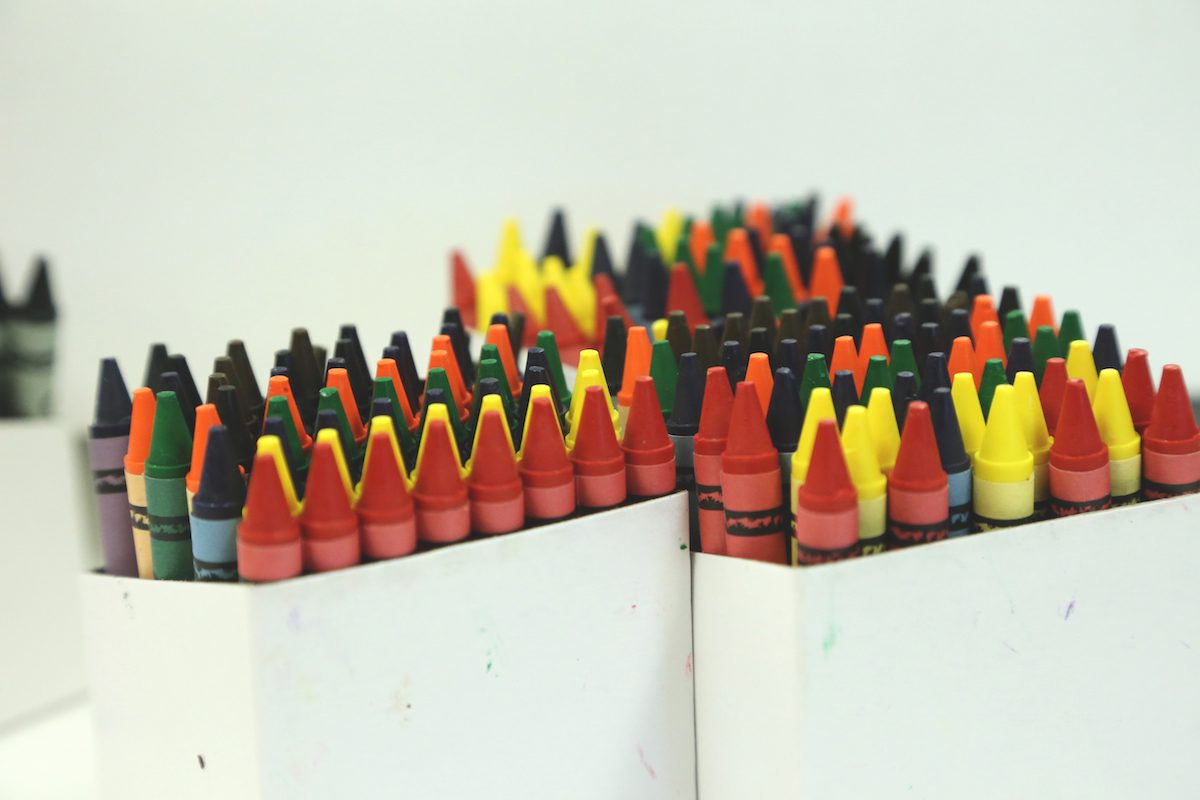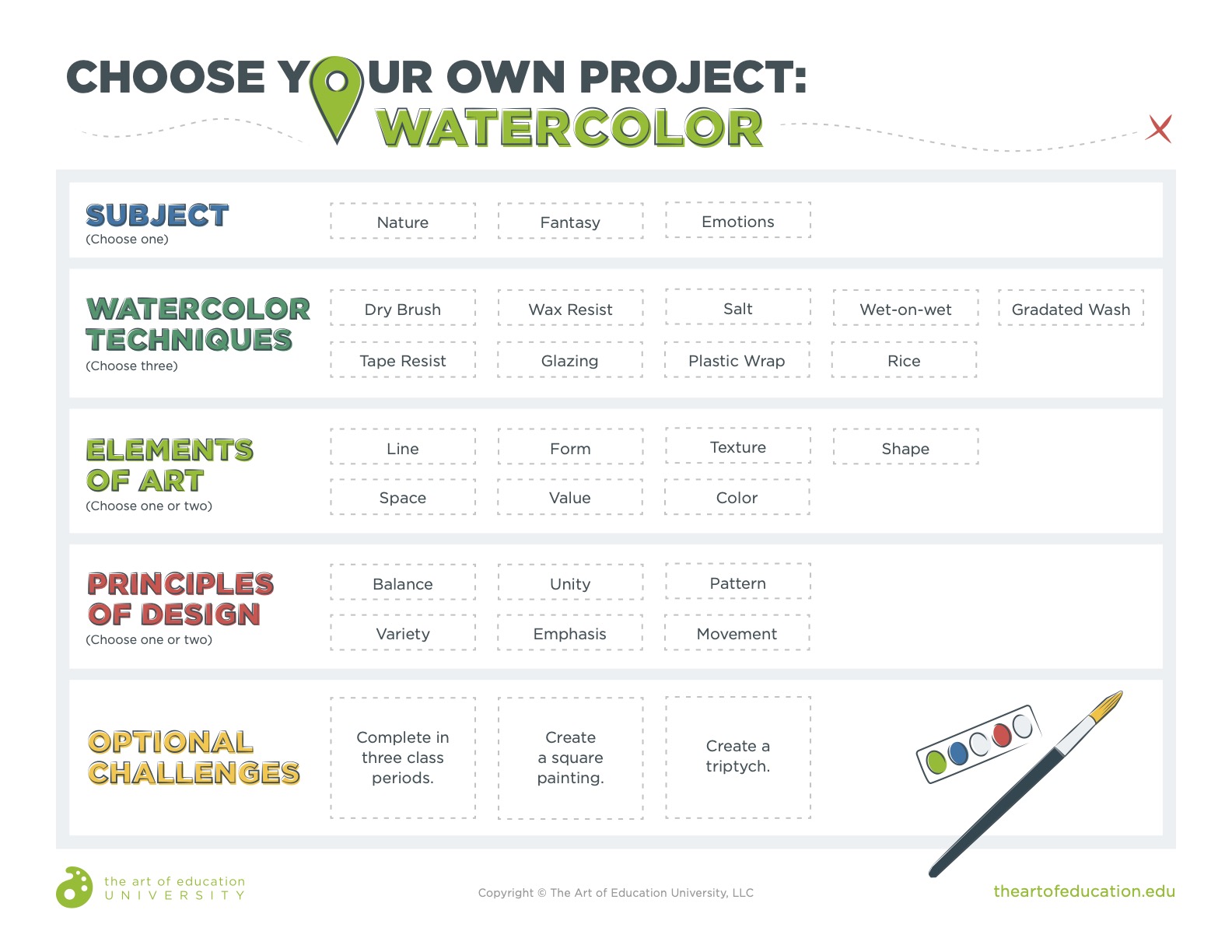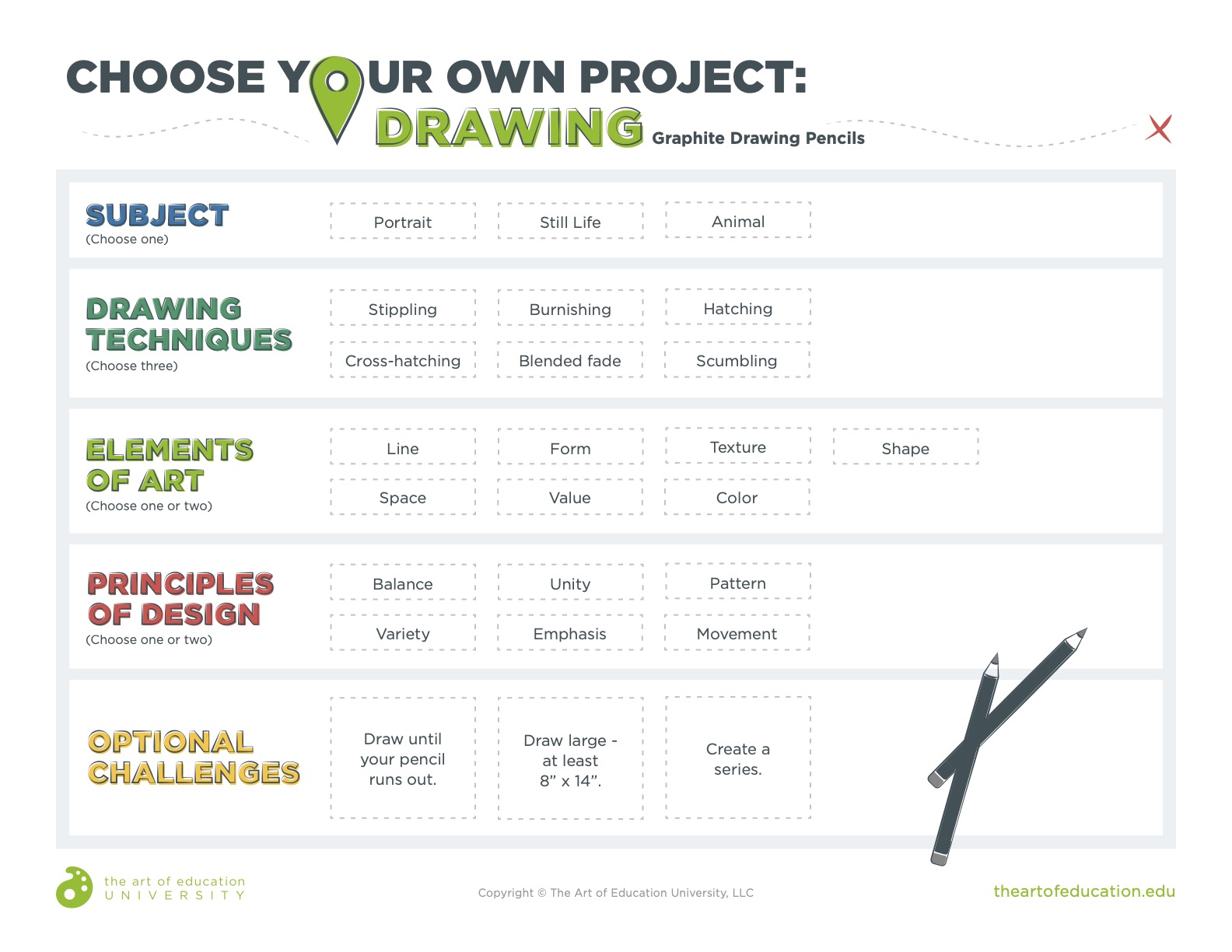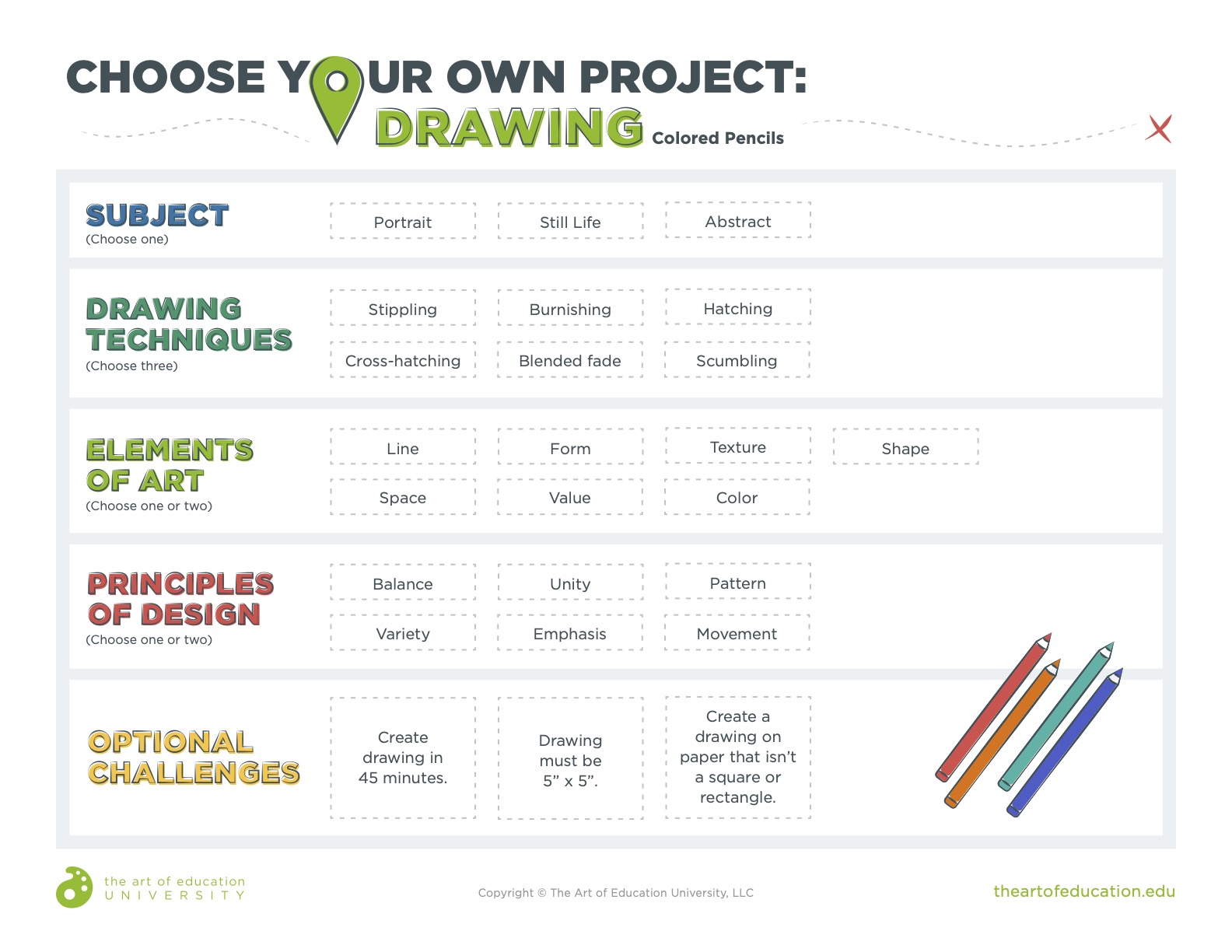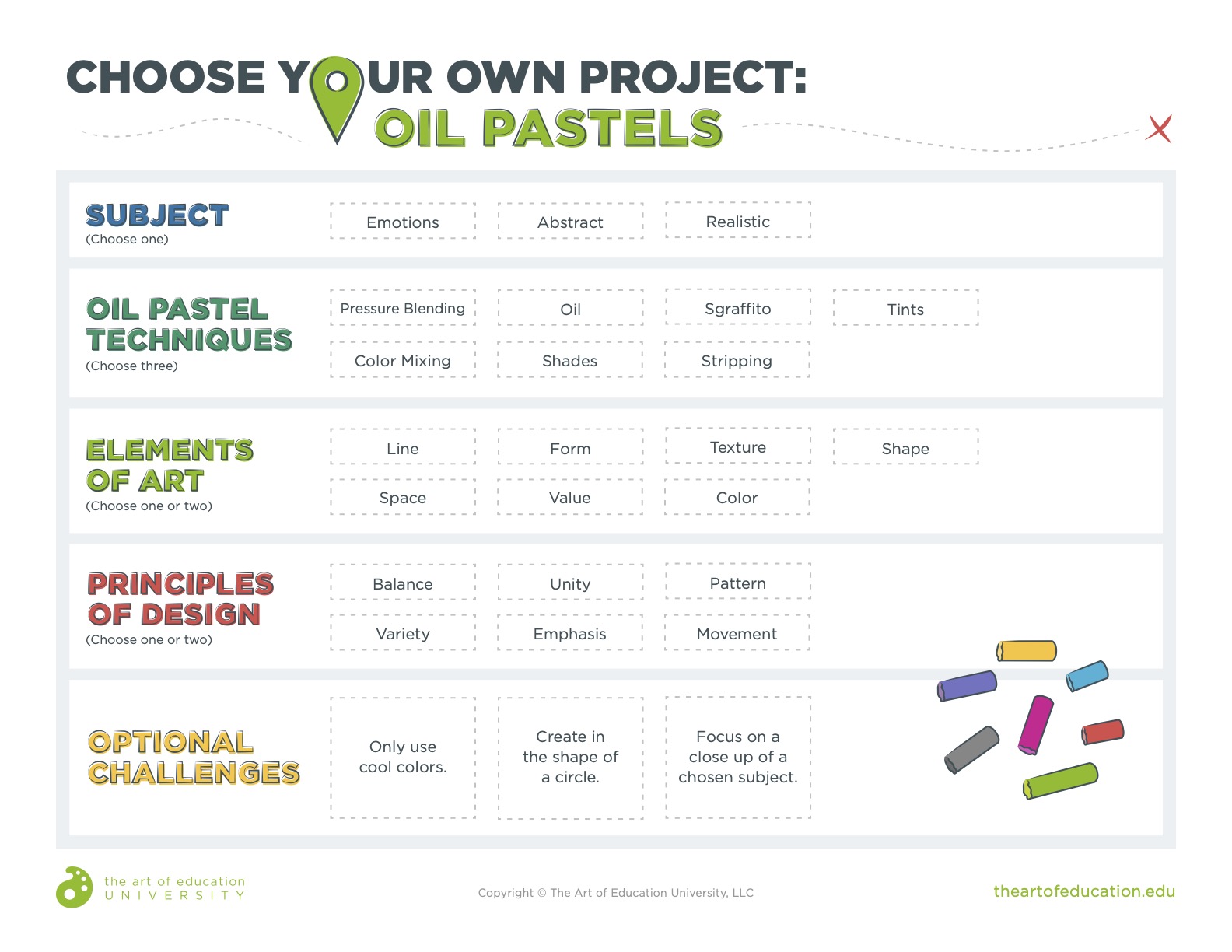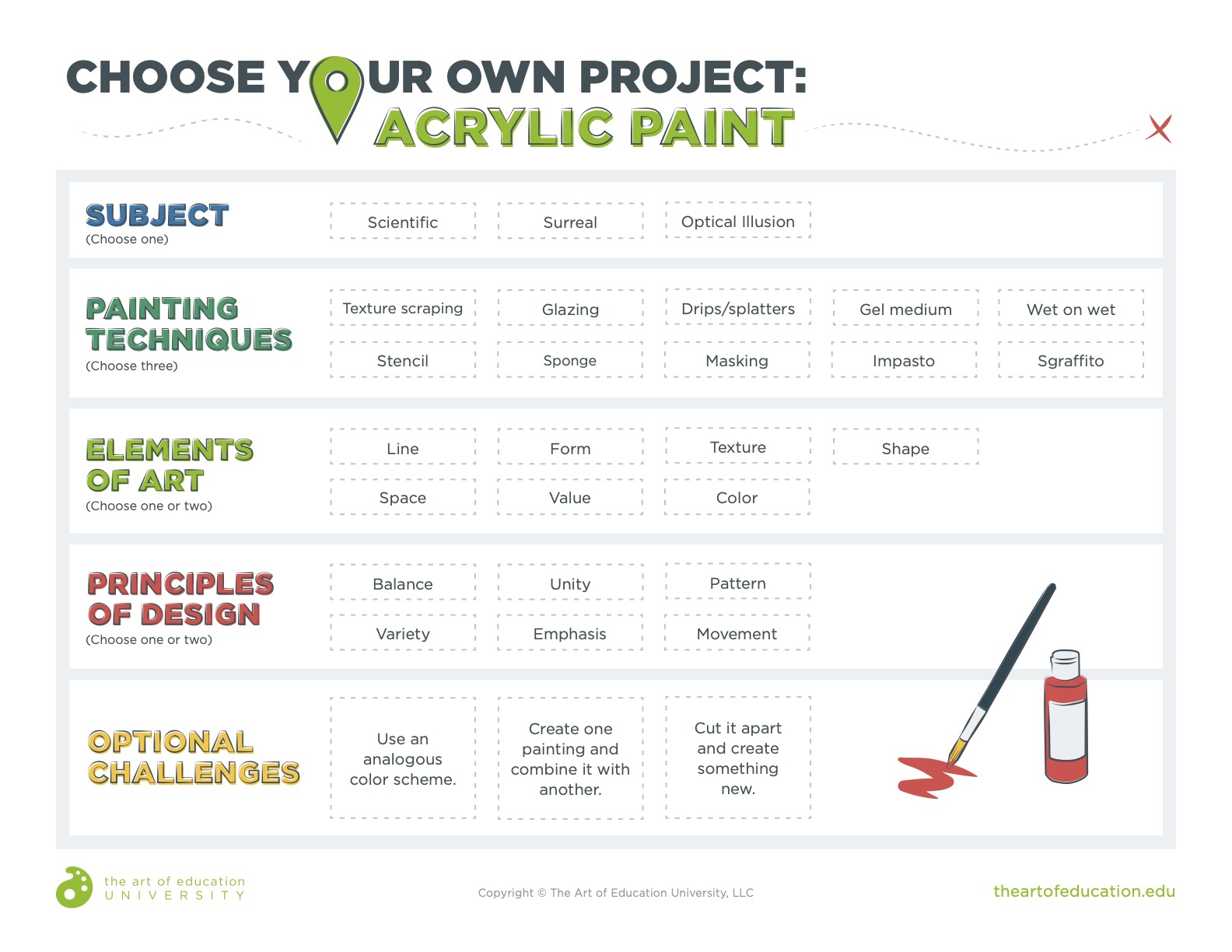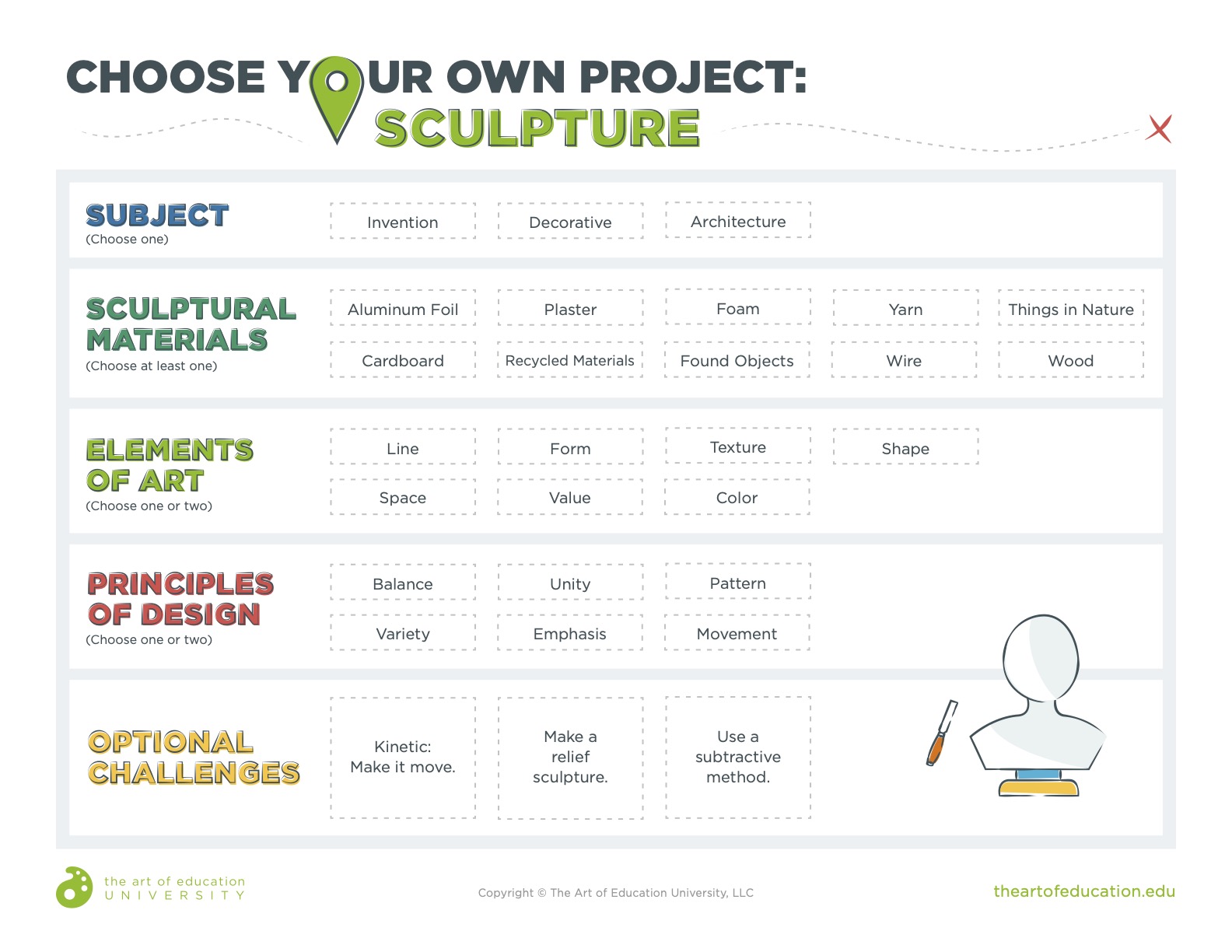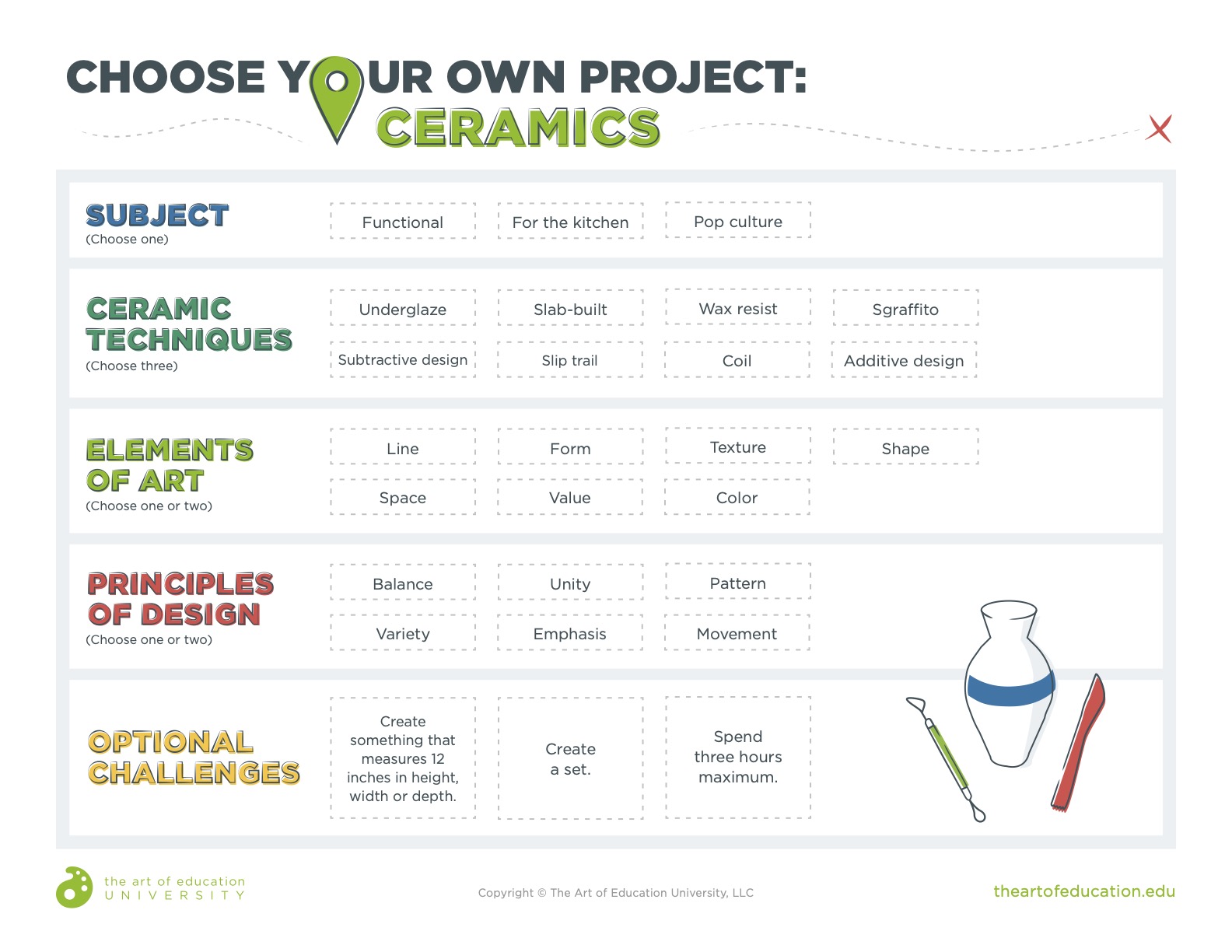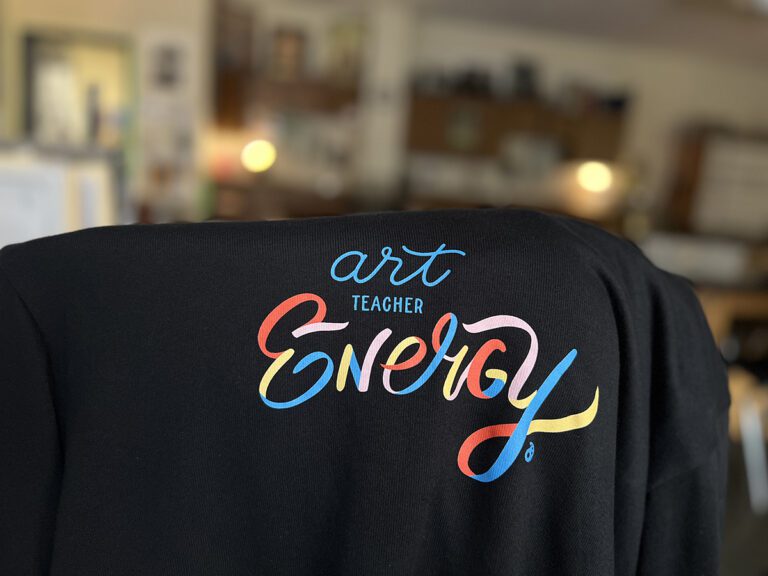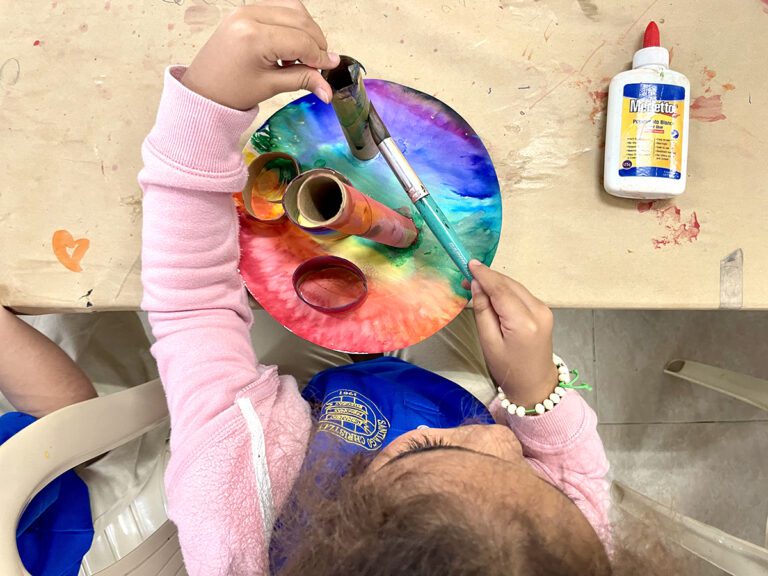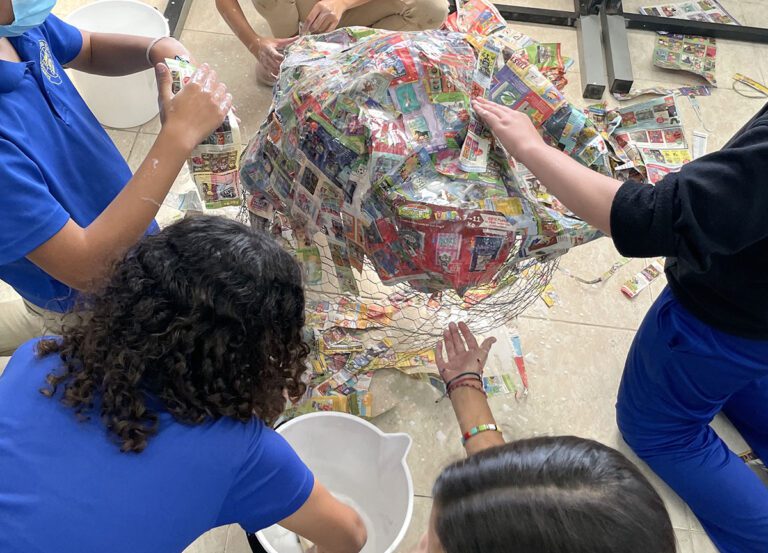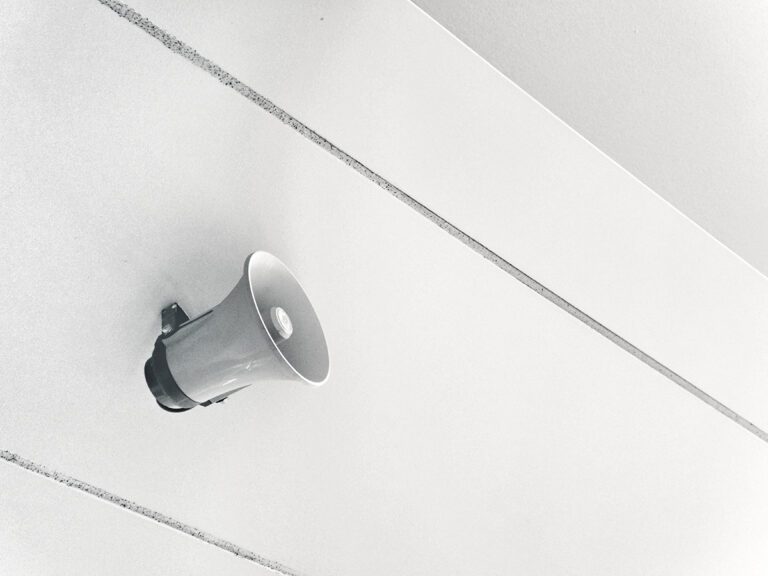It’s easy to see; students don’t work at the same pace in the art room. Most classes have students who naturally work faster, and others who work slower. It can be difficult for teachers to plan content for management and instructional purposes, depending on their students’ workflow. In situations like this, we might find ourselves giving our students “busy work” to complete just to keep them occupied.
While some of these activities are fun and meaningful, are they maximizing our early finishers’ full potential?
There will always be students who will challenge themselves when given the option to “Free Draw,” while others won’t. So, how can we ensure we are challenging our students in a meaningful and effective way? One solution is a structured choice. Because some students might feel overwhelmed with the option to create whatever they want, they might find themselves lost in the ideation process. Implementing a structured choice process that uses constraints can help students generate ideas in a less intimidating way.
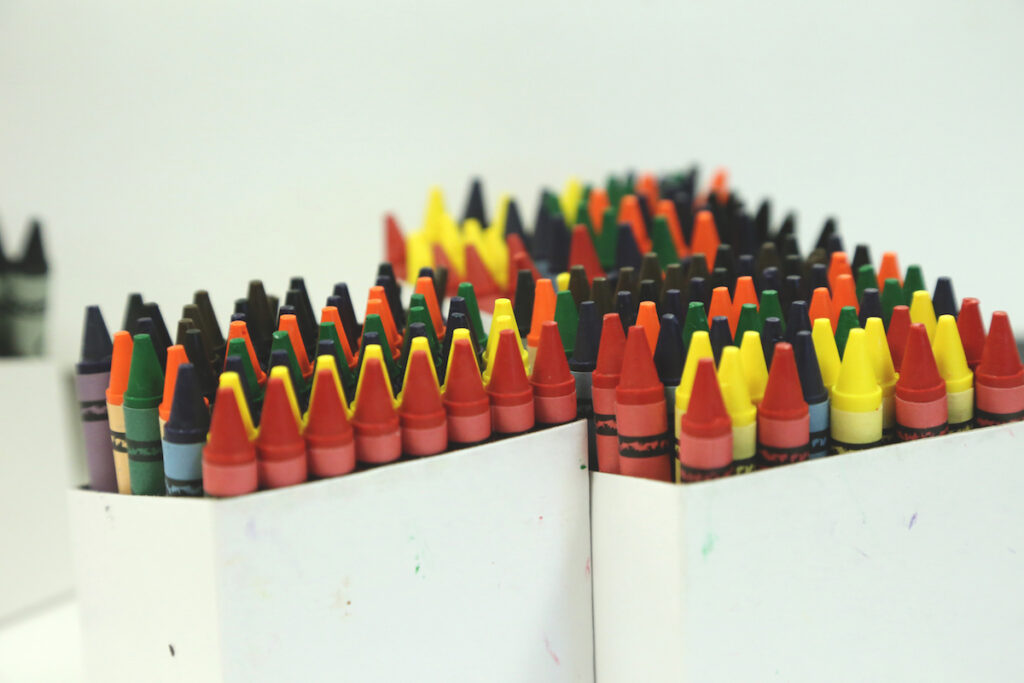
One way to implement a structured choice experience is with “Choose Your Project” activities. Here, you will find 7 Choose Your Own Art Project resources to use in your classroom.
Download them all.
1. Choose Your Own Project: Watercolor
2. Choose Your Own Project: Drawing (Graphite Drawing Pencils)
3. Choose Your Own Project: Drawing (Colored Pencils)
4. Choose Your Own Project: Oil Pastels
5. Choose Your Own Project: Acrylic
6. Choose Your Own Project: Sculpture
7. Choose Your Own Project: Ceramics
Download them all.
Additional Early Finisher Resources
20 Finish the Picture Prompts
100 Silly Drawing Prompts to Engage Your Students
100 Sketchbook Prompts Your Students Will Love
Earlier Finisher Station
The Friendly Loom
Methods for Early Finishers
Art teachers will always have to balance the speed of workflow for their students. They are individuals with their own abilities and passions, after all. Having activities and downloads handy will benefit your own approach to planning and finishing units and inspire your students.
What is your “go-to” strategy for early finishers?
What kinds of activities most inspire your students?
How can a Choose Your Own Project activity offer creativity, choice, and a connection to the National Core Art Standards?
Magazine articles and podcasts are opinions of professional education contributors and do not necessarily represent the position of the Art of Education University (AOEU) or its academic offerings. Contributors use terms in the way they are most often talked about in the scope of their educational experiences.
